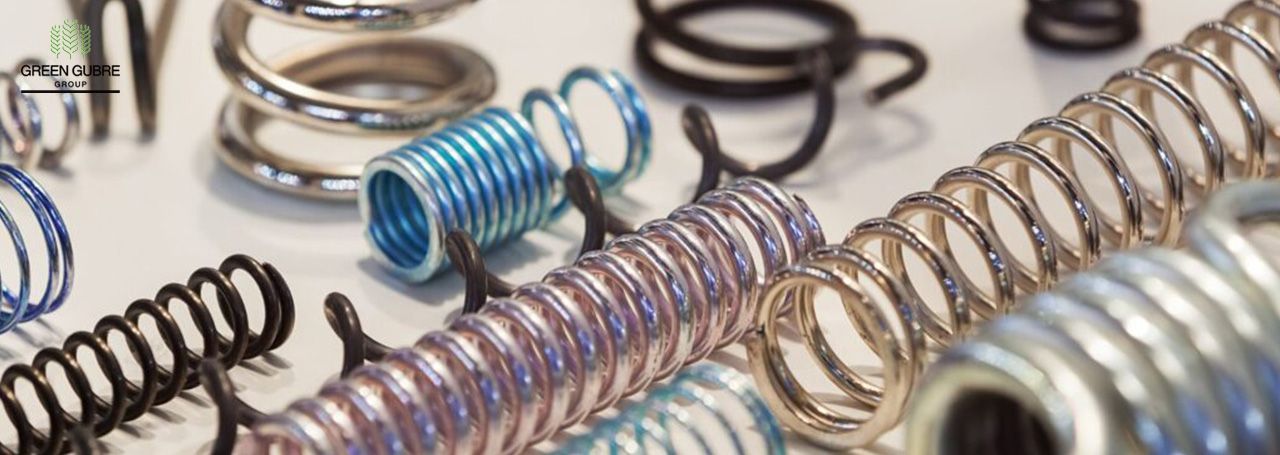The Role of Spring Steel in Industrial Applications
The Role of Spring Steel in Industrial Applications

Spring steel is a versatile alloy known for its ability to withstand heavy stress without losing its shape, making it a crucial material in the manufacturing of various springs and high-stress components. Due to its high tensile strength and excellent elasticity, spring steel is used across multiple industries, including automotive, aerospace, and construction. This blog explores the properties, benefits, and wide-ranging applications of spring steel, demonstrating its importance in industrial settings.
What is
Spring Steel?
Spring steel is a type of high-carbon steel that possesses unique qualities, including a high yield strength that allows it to return to its original shape after being deformed under stress. This material is specifically designed to undergo continuous flexing and compression without cracking, making it ideal for manufacturing springs, clips, and other load-bearing components. The alloy composition of spring steel typically includes varying amounts of carbon, manganese, silicon, and chromium, which enhance its mechanical properties.
Key Properties of
Spring Steel:
1. High Elasticity:
Spring steel’s high elasticity allows it to flex and bend without permanent deformation, ensuring that it returns to its original shape after loading or compression. This makes it ideal for components that need to handle repetitive stress and load cycles.
2. Tensile Strength:
Known for its high tensile strength, spring steel can withstand significant stretching or pulling forces without breaking. This makes it a preferred material in applications requiring durability under high loads.
3. Fatigue Resistance:
Spring steel is highly resistant to fatigue, meaning it can endure millions of cycles of flexing and compression without weakening. This property ensures long-lasting performance in demanding industrial environments.
4. Corrosion Resistance:
Certain types of spring steel are treated or alloyed to offer enhanced corrosion resistance, making them suitable for use in environments exposed to moisture, chemicals, or outdoor conditions.
5. Heat Treatment Capability:
Spring steel can be heat-treated to achieve a wide range of hardness and strength levels, allowing manufacturers to tailor the material to specific performance requirements.
Benefits of
Spring Steel:
1. Durability and Long Life:
Due to its excellent fatigue resistance and high tensile strength, spring steel components last longer, reducing the need for frequent replacements and lowering maintenance costs.
2. Versatility:
Spring steel can be shaped into various forms, including coils, strips, and wires, making it versatile for use in springs, fasteners, and automotive parts. Its flexibility and adaptability make it suitable for a wide range of industrial applications.
3. Cost-Effective:
The durability and long lifespan of spring steel reduce the need for replacements, leading to cost savings over time. Its ability to withstand extreme stress without losing functionality makes it a cost-effective choice for high-stress applications.
4. Customizable Performance:
Through heat treatment and alloying, spring steel can be tailored to meet specific performance requirements, allowing manufacturers to optimize the material’s strength, hardness, and resilience for particular applications.
Applications of
Spring Steel:
1. Automotive Springs:
Spring steel is widely used in the automotive industry to produce suspension springs, leaf springs, and coil springs, all of which require the ability to flex and compress while maintaining strength and durability. The high tensile strength and fatigue resistance of spring steel make it ideal for handling the repetitive stresses encountered in automotive suspension systems.
2. Industrial Machinery:
In industrial machinery, spring steel is used to manufacture a range of components, including gears, fasteners, and shock absorbers. Its ability to withstand repeated stress and heavy loads ensures reliable performance in machines operating under continuous or dynamic pressure.
3. Aerospace Components:
The aerospace industry relies on spring steel for components that must endure high stress and load cycles without failure. Spring steel is used in landing gear systems, control mechanisms, and structural reinforcements, where its strength and flexibility are critical to ensuring the safety and reliability of aircraft.
4. Construction Equipment:
Spring steel plays a key role in construction equipment, where it is used to manufacture tools and components that need to endure high pressure, bending, and torsion. Examples include clamps, saw blades, and industrial springs used in heavy machinery.
5. Electrical and Electronic Applications:
Spring steel is also used in the manufacturing of electrical connectors, switches, and relays, where its ability to conduct electricity and maintain shape under stress is essential for reliable electrical performance. The material’s corrosion resistance also ensures longevity in these applications.
Grades of
Spring Steel:
1. High-Carbon Spring Steel:
This grade of spring steel is commonly used in the production of high-stress components such as automotive springs, hand tools, and industrial machinery parts. It offers high hardness and durability, making it ideal for demanding applications.
2.
Alloy Spring Steel:
Alloy spring steels contain additional elements like chromium, silicon, and manganese, which enhance their strength, elasticity, and corrosion resistance. These steels are used in environments where enhanced performance and durability are required.
3.
Stainless Spring Steel:
Stainless spring steels offer excellent resistance to corrosion and are used in environments where moisture, chemicals, or extreme temperatures are present. They are commonly used in medical devices, marine equipment, and food processing machinery.
Global Demand for
Spring Steel:
The demand for spring steel continues to grow as industries worldwide seek materials that provide strength, flexibility, and durability. In the automotive and aerospace sectors, the need for high-performance materials has driven the demand for spring steel, particularly in applications requiring fatigue resistance and long-term durability. Additionally, as the construction and industrial machinery sectors expand globally, the demand for durable and cost-effective spring steel components is expected to rise.
Sustainability and Recyclability:
Spring steel is fully recyclable, making it an environmentally friendly material for manufacturers seeking to reduce waste. The ability to recycle spring steel also contributes to the sustainability of the industries that rely on it, helping to minimize the environmental impact of production processes.
Conclusion:
Spring steel is an essential material in numerous industrial applications, offering the strength, flexibility, and durability needed for high-stress components. Whether in automotive, aerospace, or industrial machinery, spring steel’s properties make it an indispensable material for manufacturing parts that must endure continuous stress and load cycles. As demand for reliable, long-lasting materials continues to grow across industries, spring steel remains a key player in enhancing the performance and lifespan of critical components. Explore our range of high-quality spring steel products designed to meet your specific application needs on our dedicated product page.




